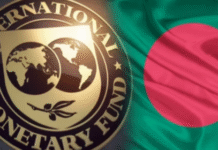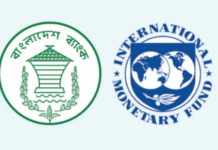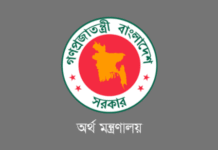Prothom Alo
To cope with the situation these families used up their savings and took loans, which led to a 62 per cent decrease in the average monthly savings of these households and a 31 per cent increase in debt.
The study was conducted by the Center on International Cooperation of New York University, BRAC and UN WOMEN Bangladesh on the changes in demographic, economic and social environments in the secondary towns, peri-urban (upazila) and rural areas of Bangladesh brought on by the rise in reverse migration during the pandemic.
The research findings were unveiled at a virtual international dialogue titled, ‘Demographic and Socio-economic Changes induced by the Covid-19 Pandemic: Challenges of New Circumstances’ held recently.
A panel of distinguished experts, academics, policymakers and development professionals shared their insights at the dialogue, while focusing on the policy priorities identified by the study findings and suggested opportunities to address challenges moving forward.
Leah Zamore, humanitarian crises programme lead at the Center on International Cooperation of New York University moderated the dialogue.
KAM Morshed, senior director of BRAC, presented the research findings with Shoko Ishikawa, country representative, UN Women Bangladesh, Dr Daniel Naujoks, interim director, International Organization and UN Studies Specialization at Columbia University School of International and Public Affairs, and Dr Adam Schwartz, director of health for BRAC USA, participating as panelists in the discussion session.
The study was conducted by both qualitative and quantitative methods and relied on a survey of 6,370 households conducted from 10-25 December 2020.
The survey was based on a reference period of April-October 2020.
The study highlighted the impact of Covid-19 pandemic on both the internal and international migration, compelling people and families to return to their places of origin.
Around 77 per cent of both the internal and international returnee migrants in Bangladesh were struggling to find a job during the survey period. Among these households, 61 per cent had at least one member who lost a job or earning opportunity during the pandemic.
The study also found that 25 per cent of returnee migrant households expressed concern about repaying their outstanding migration loans amounting to 76,000 BDT (around $900 USD) on average and a maximum of 700,000 BDT (around $8,300 USD).
Around 44 per cent of the respondents reported they could not find any income-generating work. Some of them managed expenses by withdrawing from savings or renting out their assets.
Surveyed households reported a 58 per cent decrease in average monthly remittances received during the pandemic.
Furthermore, the study anticipated that returnee migrant families would increase the pressure on the already resource-constrained local sectors, education and health in particular. Of the returnee population, 4.57 per cent school-age children (5-16 years) would struggle to get back to their previous educational institutions.
Resource constraint, the study projected, worsened in the health sector too, with 17.91 per cent of both the external and internal returnee population being aged over 40 years (13.35 per cent above 40 years and 4.56 per cent above 50 years).
The study also found key gender-based differences in returnee experience. Female returnee migrants, mostly internal ones, dealt with heightened burden during the first wave of the pandemic.
Survey respondents identified a number of key challenges, such as, inability to engage in productive or income-generating work (74 per cent), problems in moving freely in the streets and marketplaces (26.8 per cent), problems in adjusting with the local culture, absence of utility services (20 per cent), an increased burden of household chores, and problems in child-rearing and ensuring their education (18 per cent).
The findings also suggested a higher incidence of child marriage in Bangladesh during the pandemic. Of the marriages that occurred during the survey period, more than three-fourths (77 per cent) of the brides were below 18 years and 61per cent were below 16 years at the time of their marriage.
As per the study, in 2020 in Bangladesh, the expected crude birth rate in the rural areas was 19.5 per thousand population, and in the households with returnee migrants it was 33.4 per thousand population.
Additionally, the average family size was found to be 4.7, a figure higher than the pre-pandemic national average of 4.06 (Household income and expenditure survey – HIES 2016).
Shoko Ishikawa, country representative, UN Women Bangladesh, said, “Bangladesh is one of those countries where schools remain closed for over one and a half years although digital learning opportunities for children are quite inadequate particularly in the rural areas.
“Long period of shutdown of schools has implications on child marriage at an increasing rate and economic challenge is forcing families to get their girl children married off. We need to make sure that social protection measures and social safety nets are reaching the families so that they do not need to resort to such measures.”
Columbia University professor Daniel Naujoks said, “The study will help local, regional and national-level policymakers to create better ideas to address the challenges. Our economic and social systems are strained and often broken down being exposed to many vulnerabilities. To address these challenges, we need political momentum to really revolutionise the system and find strong large-scale reforms.”
Stressing women’s decision-making role regarding the use of contraceptives, BRAC USA director Adam Schwartz said, “We want to make sure that women have sufficient tools and abilities to safeguard their health and family planning decisions.”
“Can we build systems and services so that the government and NGO actors can meaningfully improve not just knowledge or access, but actual agency, resiliency and alternatives? I would like to see more studies on what’s really working as solutions.”










